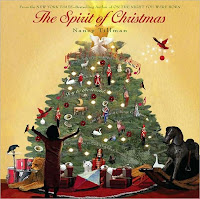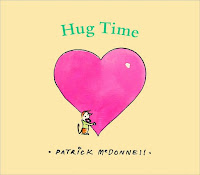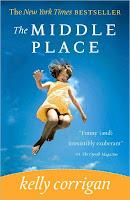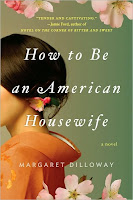 This week has been a gloomy and doomy weather week. Bitter cold temperatures for our desert clime: rain, wind and some even said they saw snow! While I didn’t see any, I saw perfect weather for curling up with a good book; fitting that this is the last week of my book-a-week project. It also seemed rather fitting that during this last week of gray skies and personal contentment that I slide How Reading Changed My Life by Anna Quindlen off the shelf. Not sure how it took me so long to read this book that I have owned for a few years and yet it’s a bit serendipitous stumbling upon it now after a year of doing more reading than I have ever done before.
This week has been a gloomy and doomy weather week. Bitter cold temperatures for our desert clime: rain, wind and some even said they saw snow! While I didn’t see any, I saw perfect weather for curling up with a good book; fitting that this is the last week of my book-a-week project. It also seemed rather fitting that during this last week of gray skies and personal contentment that I slide How Reading Changed My Life by Anna Quindlen off the shelf. Not sure how it took me so long to read this book that I have owned for a few years and yet it’s a bit serendipitous stumbling upon it now after a year of doing more reading than I have ever done before.
How Reading Changed My Life is lifelong reader and Pulitzer-prize winning writer Anna Quindlen’s account of her most favorite of pastimes. Reading trumped everything for Quindlen, and for that I felt an instant kinship.
“I did not read from a sense of superiority, or advancement or even learning. I read because I loved it more than anything other activity on earth.”
Many of my current friends can’t imagine me as a shy or quiet person, yet reading was my primary activity of choice up until high school theater pulled me in. Prior to that I had a very small circle of friends, preferring one-on-one interactions over large groups. Looking back I recall Barbara, a girl who preferred her nose in a book rather than sparking up a conversation… a perfect pal! We were bus riding friends, always saving a seat for one another, respecting each other’s quiet ride to school, only the rustle of a page turned passed between us. And even now, years out that quiet and insular shell, I love to read more than I love to do most anything else.
Quindlen shares not just her love of reading and the importance that various books have played in her life, but the value of connection found in reading–especially among women.
“Women seem to see reading not only as a solitary activity, but an an opportunity for emotional connection, not just to the characters in a novel but to those others who are reading or have read the same novel themselves.”
Is that really surprising, though? Just look at the number of book clubs that have sprung up in recent years. Almost everyone I know is in a book club or knows someone who is. My own club has been going strong for over seven years and it is for all of us, one of our most looked-forward to and favorite “me” times of the month. The diversion it creates away from work, children, partners, chores, bills and all the other to-dos gives us opportunity not just to catch up, but to escape for a few hours and talk intelligently, passionately, with no holds barred or judgements rendered on the opinions we share about the book we have just read.
Also not surprising is the popularity of book clubs (and reading in general) amongst women. This is not the same, Quindlen states, for men. She pulls some interesting, although not shocking, data from a 1991 Gallup poll on the differences men and women share regarding reading:
- Women are more likely to find reading a more relaxing pastime than watching television.
- College-educated women reported reading an average of 25 books over the space of a year… men only 15.
She goes on to interview bookstore owners, uncovering that women are more likely to read novels, versus men who pick up more biographies and historical books. Just another example of the different ways women and men are wired.
As I flipped through the pages and began taking notes of some of Quindlen’s recommended reading, I began to think about how reading has changed my own life. Certainly, as I was a young adult, it was pure escapism and comfort. In college, my reading for pleasure all but disappeared and was replaced by the large text books, carried in a backpack or satchel that bore a deep indentation on my right shoulder. It wasn’t until 2003, and nine years after college, that I really returned to my childhood love of reading. I proposed the idea of dining and dishing on books to some friends, and on a whim we started a book club. Not only have I read some fantastic books, but I have made and kept some fabulous friendships. Books are one of my favorite topics of conversations and is one of the things that bonds me and some of my closest friends. Truth be told, I probably won’t trust you if you don’t have books–even a single book–in your life.
Over the years, reading has indeed changed my life. It changes the life of everyone I know that does it. When the structure of the words on the page bring tears to your eyes, remind you that you are not alone, or make you laugh so hard your stomach aches, you have been changed in the simplest and most profound ways.
I couldn’t have guessed what a single year of reading a book each week would do for me, but it did more than I could have imagined. Sure I watched less television, but surprisingly, it didn’t cut into my time with the kiddo, my friends or other pastimes. I felt more connected to others (my kiddo and book-loving blogging partner, in particular) this year, more objective and empathetic. Just being exposed to so many different people and circumstances inhabited in the many pages I devoured (over 13,000) will do that for you.
So many people wondered why I would take something like this on, offered me encouragement and praise or lamented they too should read more. I think you all know that I would never discourage anyone from picking up a book; I will always think there’s value in doing that. But the reality is, anyone who embarks on any kind of personal project needs to do so with a real affinity for what they are undertaking and not because the “feel they should.” But just know, that if you do decide to boost your reading, even if only by one book, it will change you.
Grade: 5 stars
Pages: 96
Genre: Memoir

 This week has been a gloomy and doomy weather week. Bitter cold temperatures for our desert clime: rain, wind and some even said they saw snow! While I didn’t see any, I saw perfect weather for curling up with a good book; fitting that this is the last week of my book-a-week project. It also seemed rather fitting that during this last week of gray skies and personal contentment that I slide How Reading Changed My Life by Anna Quindlen off the shelf. Not sure how it took me so long to read this book that I have owned for a few years and yet it’s a bit serendipitous stumbling upon it now after a year of doing more reading than I have ever done before.
This week has been a gloomy and doomy weather week. Bitter cold temperatures for our desert clime: rain, wind and some even said they saw snow! While I didn’t see any, I saw perfect weather for curling up with a good book; fitting that this is the last week of my book-a-week project. It also seemed rather fitting that during this last week of gray skies and personal contentment that I slide How Reading Changed My Life by Anna Quindlen off the shelf. Not sure how it took me so long to read this book that I have owned for a few years and yet it’s a bit serendipitous stumbling upon it now after a year of doing more reading than I have ever done before. It’s confession time again. And if you are keeping track, this is my fourth confession to date. I needed an easy read this week, the week of Christmas and all; and I didn’t want to skate by on another book of poem’s or kiddie lit. So I did the next easiest thing: I picked up Hint Fiction: An Anthology of Stories in 25 Words or Fewer compiled by Robert Swartwood.
It’s confession time again. And if you are keeping track, this is my fourth confession to date. I needed an easy read this week, the week of Christmas and all; and I didn’t want to skate by on another book of poem’s or kiddie lit. So I did the next easiest thing: I picked up Hint Fiction: An Anthology of Stories in 25 Words or Fewer compiled by Robert Swartwood. I have always loved Christmas. It’s absolutely-without-a-doubt my favorite holiday of the year. The twinkly lights, beautiful songs, delicious food, parties and get-togethers, finding the perfect gift, time off and all that goes into getting ready for Christmas are all things I look forward to. Sure there’s the stress of the holiday and the anxiety around getting everything done (some years I do, some not so much). And even now as a mother, I admit, I have lost a little sight on the the true gift of Christmas as I search for that “one” toy the kiddo wants (and throwing a few extra things under the tree while I am at it).
I have always loved Christmas. It’s absolutely-without-a-doubt my favorite holiday of the year. The twinkly lights, beautiful songs, delicious food, parties and get-togethers, finding the perfect gift, time off and all that goes into getting ready for Christmas are all things I look forward to. Sure there’s the stress of the holiday and the anxiety around getting everything done (some years I do, some not so much). And even now as a mother, I admit, I have lost a little sight on the the true gift of Christmas as I search for that “one” toy the kiddo wants (and throwing a few extra things under the tree while I am at it). The holiday season is rapidly approaching and this week I have a perfect little book for those of you feeling a tad naughty this year. David Sedaris, a master of satirical comedy, updated his 1997 classic Holidays on Ice this year with the original stories and a few more thrown in for good cheer.
The holiday season is rapidly approaching and this week I have a perfect little book for those of you feeling a tad naughty this year. David Sedaris, a master of satirical comedy, updated his 1997 classic Holidays on Ice this year with the original stories and a few more thrown in for good cheer.
 It’s Thanksgiving week and there’s so much for which I am grateful, the least of which is extra time! But with extra time that actually means less time for reading and more time for equally important activities like connecting with family and friends, hitting the movie theater, sleeping in, playing games, and all things that a holiday weekend is meant to hold.
It’s Thanksgiving week and there’s so much for which I am grateful, the least of which is extra time! But with extra time that actually means less time for reading and more time for equally important activities like connecting with family and friends, hitting the movie theater, sleeping in, playing games, and all things that a holiday weekend is meant to hold. This week I am back to my favorite new genre, the Graphic Novel, discovered while undertaking this weekly reading challenge! No matter that it’s really the only new genre I have tried all year. It’s also no matter that it’s only the second time I have read from this genre. I mean who’s keeping score? Okay, I am. And at the end of the year I am going to have this wicked cool post full of stats and numbers (or as many stats and numbers that a Communications major can muster) and my fellow book nerds are going to love it and some will think it’s dumb and that’s okay, too.
This week I am back to my favorite new genre, the Graphic Novel, discovered while undertaking this weekly reading challenge! No matter that it’s really the only new genre I have tried all year. It’s also no matter that it’s only the second time I have read from this genre. I mean who’s keeping score? Okay, I am. And at the end of the year I am going to have this wicked cool post full of stats and numbers (or as many stats and numbers that a Communications major can muster) and my fellow book nerds are going to love it and some will think it’s dumb and that’s okay, too. After reading LIFT by Kelly Corrigan, I was seriously jonesing (does anyone say that anymore? I guess I do) to pick up her first book, THE MIDDLE PLACE. After last week’s book club selection, I wasted no time cracking it open and I am not sure I even put it down once I started.
After reading LIFT by Kelly Corrigan, I was seriously jonesing (does anyone say that anymore? I guess I do) to pick up her first book, THE MIDDLE PLACE. After last week’s book club selection, I wasted no time cracking it open and I am not sure I even put it down once I started. This week’s pick comes courtesy of my book club, a group of dynamic women that have met for over six years and actually talk about the books we read. Oh sure we fit in the offshoots and the tangents where art imitates life, or catch up on work, lack of work, significant others, or a lack of others that are truly significant, and then we find our way back to the book, for better or worse. This month, it was for better, because not only was HOW TO BE AN AMERICAN HOUSEWIFE by Margaret Dilloway a great read, but we also got to talk to the author during our monthly ritual of dining and dishing.
This week’s pick comes courtesy of my book club, a group of dynamic women that have met for over six years and actually talk about the books we read. Oh sure we fit in the offshoots and the tangents where art imitates life, or catch up on work, lack of work, significant others, or a lack of others that are truly significant, and then we find our way back to the book, for better or worse. This month, it was for better, because not only was HOW TO BE AN AMERICAN HOUSEWIFE by Margaret Dilloway a great read, but we also got to talk to the author during our monthly ritual of dining and dishing.